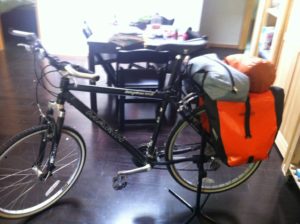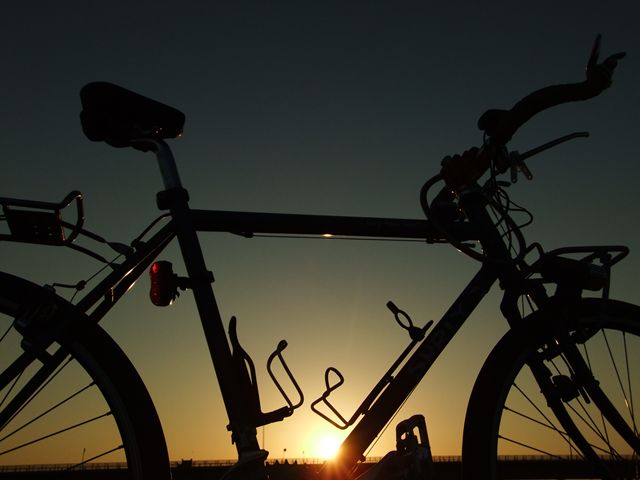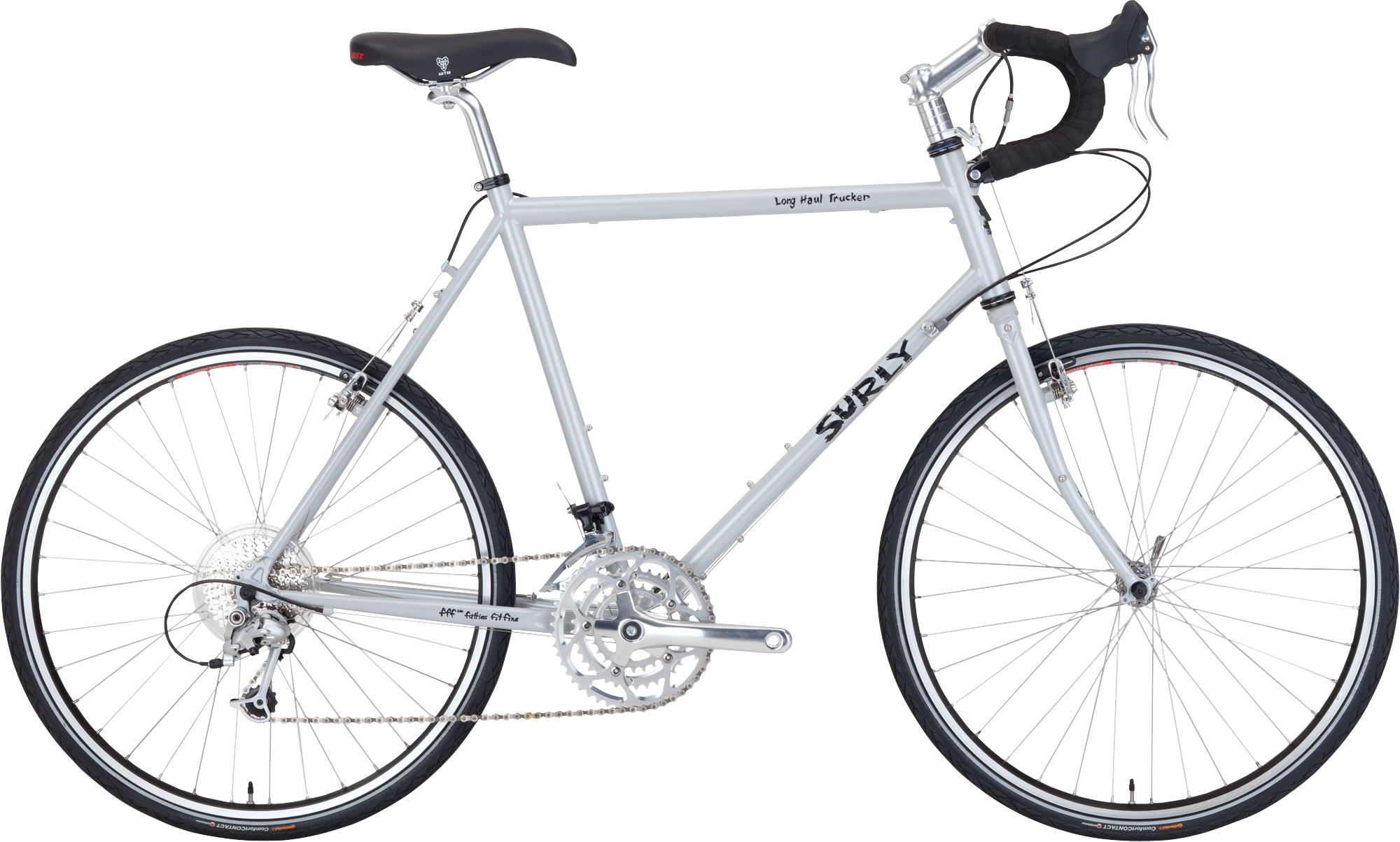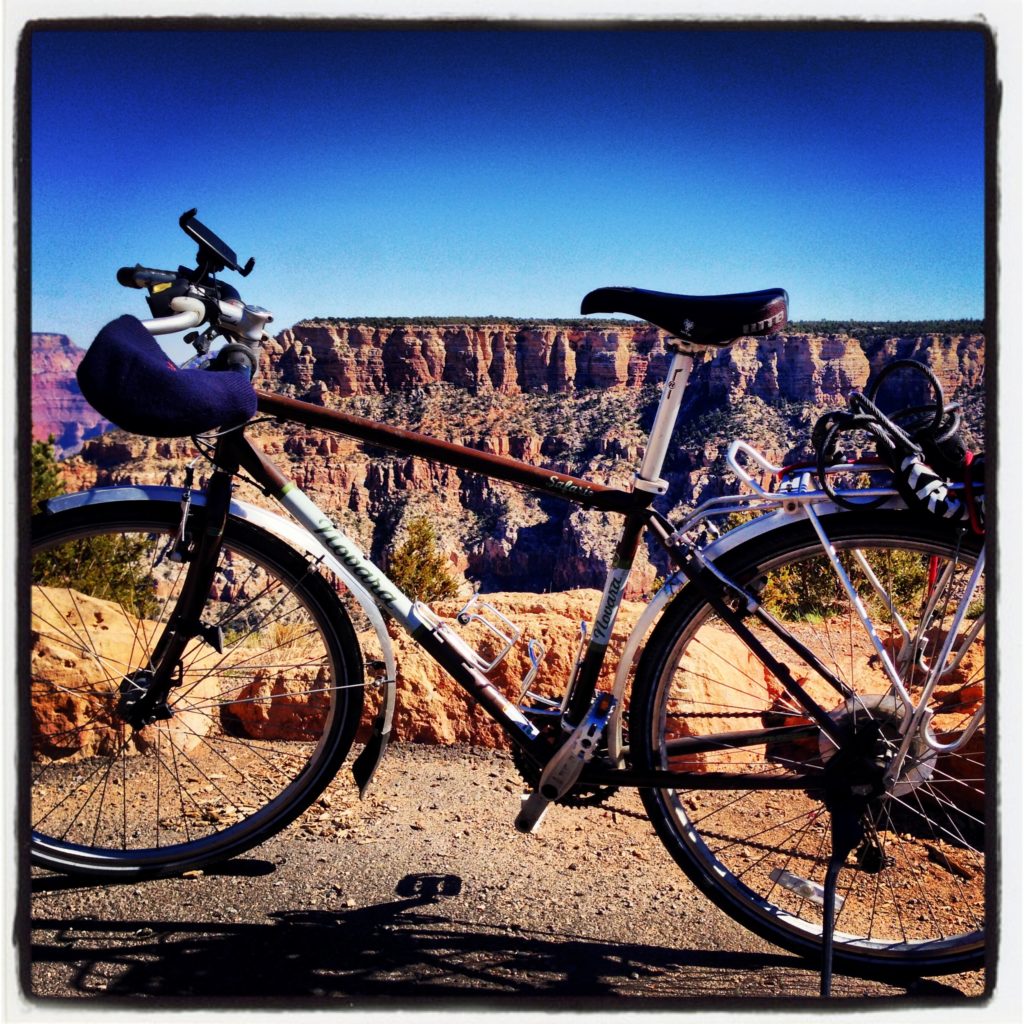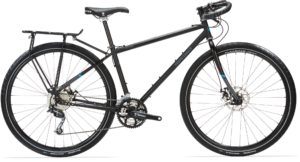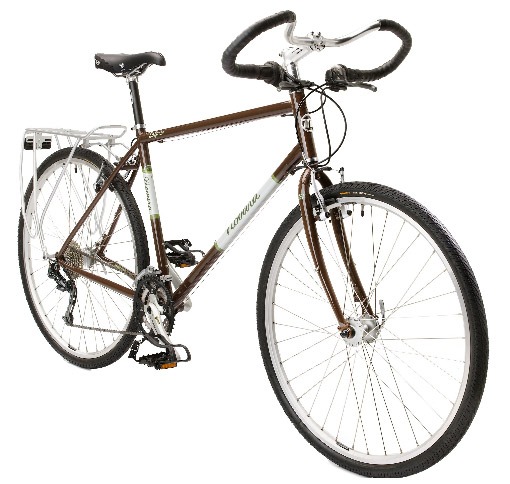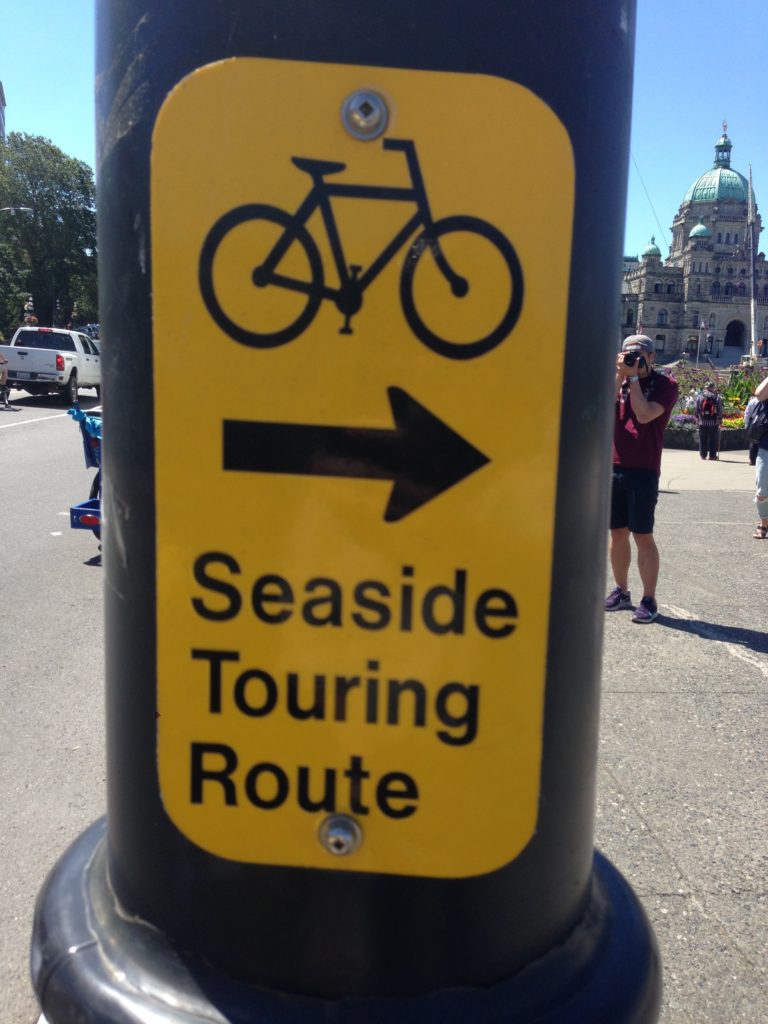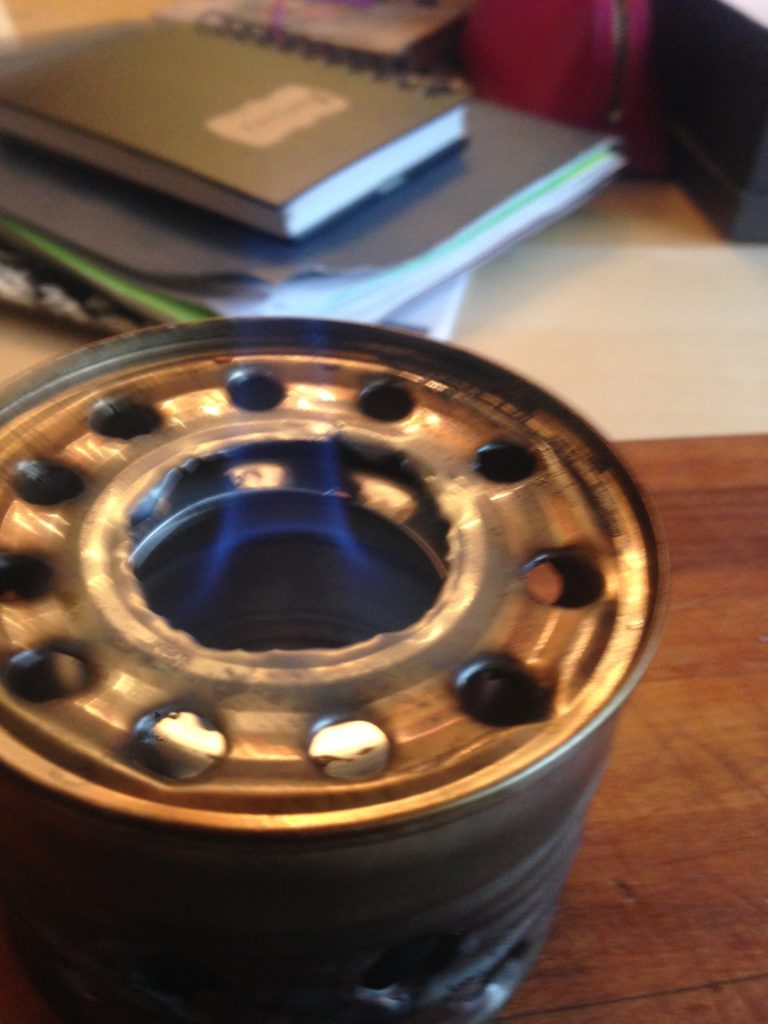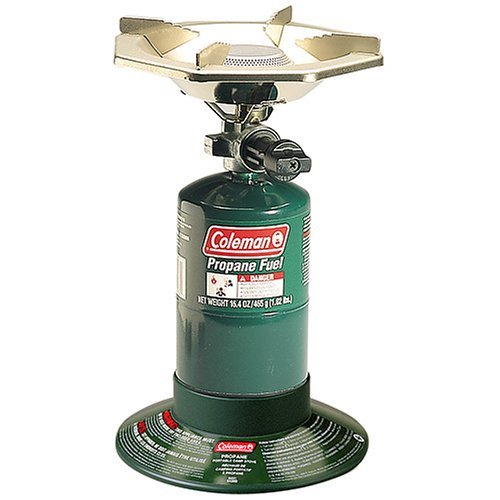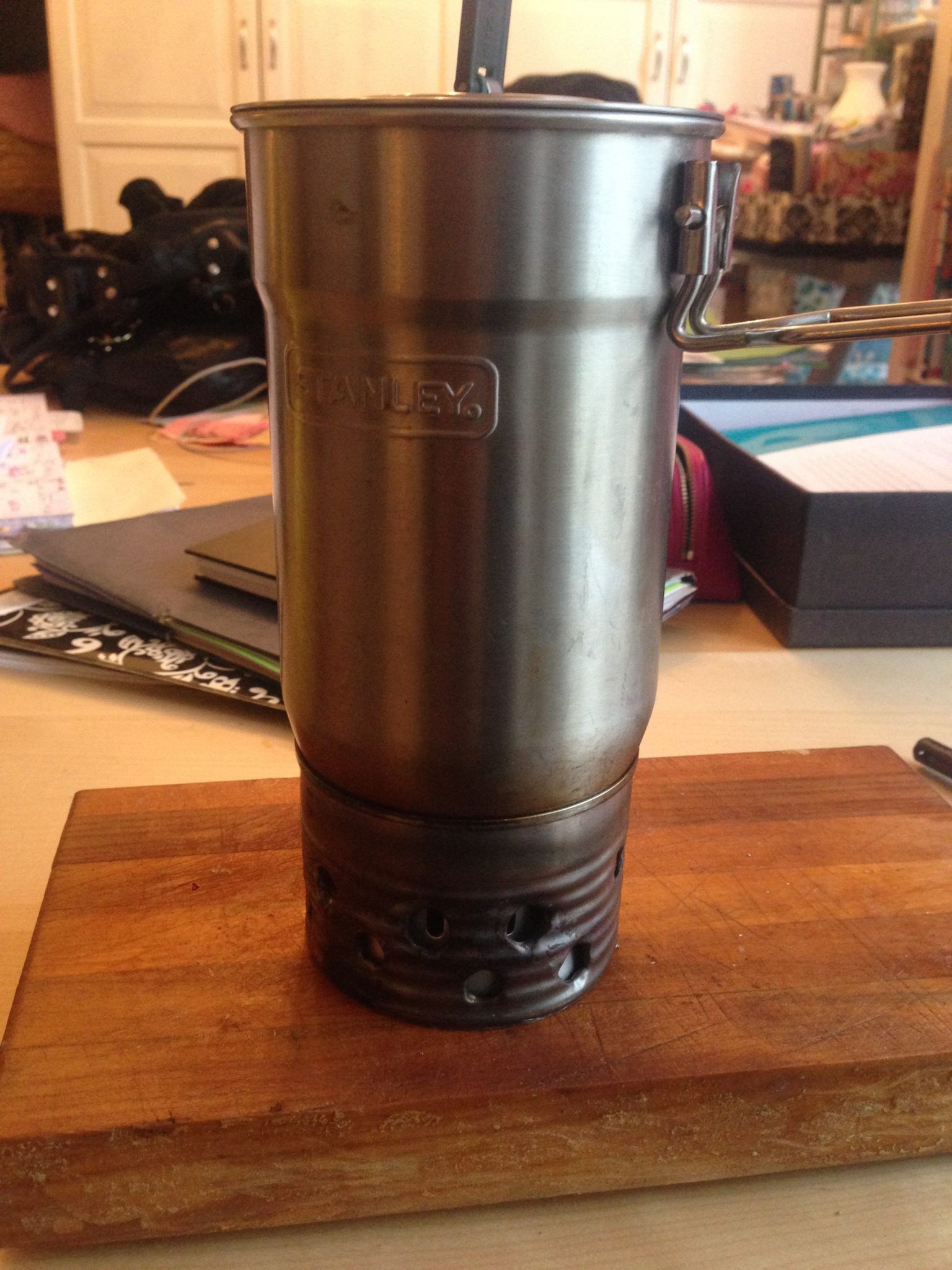A typical Brompton with a rear rack and ez-wheels is a great bike for touring or just using for transportation at whatever destination is on your itinerary. What’s amazing about them is they can also fit in the overhead compartment of most larger aircraft… meaning you can have your bike with you as your carry on. Here are a few tips you need to know when flying with your Brompton.
Download Pedalshift Project #34: Flying with your Brompton
#1 Telescoping seat post FTW
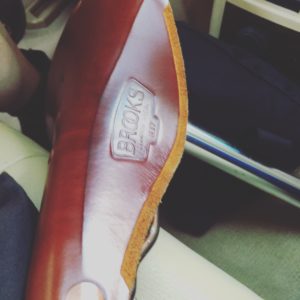 The telescoping seat post is a real help when you’re planning on bringing your Brompton aboard with you. It lets you easily remove the saddle without tools, making your Brompton more compact to fit into two important places – the carry-on luggage belt and the overhead bins of most larger planes. It’s not that you can’t do this with the standard seatpost, but it requires you to unbolt your saddle… kind of a drag if you can avoid it.
The telescoping seat post is a real help when you’re planning on bringing your Brompton aboard with you. It lets you easily remove the saddle without tools, making your Brompton more compact to fit into two important places – the carry-on luggage belt and the overhead bins of most larger planes. It’s not that you can’t do this with the standard seatpost, but it requires you to unbolt your saddle… kind of a drag if you can avoid it.
#2 Know your plane
You probably noticed I keep hedging on this… you can get your Brompton in the overhead bins of most larger planes. If your itinerary includes a regional jet, or worse, something with propellers… your Brompton won’t fit on board. You’ll need to gate-check it and that means it goes into the belly of the beast. A lot of times you get the bike back as you exit, but sometimes the airlines make you collect the bike at baggage check along with the masses. If you do gate check the bike, ask to get it right after you land on the jetway to be safe. Sometimes that works, sometimes that doesn’t.
Even if you know you’re on bigger planes with bigger overhead bins, sometimes the world conspires against you… it’s always best to be ready for gate checking. A $5 Dimpa bag from IKEA fits a Brompton like a glove and gives baggage handlers a handle. I also recommend using some velcro straps to ensure your bike remains folded. I had to gate-check my Brompton once because of the volume of carry-ons and the Dimpa bag worked great and the bike came through without a scratch or a dent. Pro-tip: tighten down the frame bolts so they are locked down. This minimizes the chance they can get jostled and break. If things go well, you’ll get the bike in the overhead bin and you won’t need any of this advice. If not, you’ve got it as a backup.
For the record, here are a list of jets with overhead bins that a Brompton fits based on personal experience:
- Airbus A319
- Airbus A330-300
- Boeing 757-300
- Boeing 737-800
- Boeing 777[footnote]The overhead bins on newer jets like the 777 are the style where the whole bin drops down, not just the door. It makes for a heavy close with the Brompton in there and you may need to adjust it on the way up. It fit, but when I first boarded a 777 flight in June 2016 I wasn’t sure it was going to work![/footnote]
(there are way more, of course)
#3 Know when to roll em, know how to fold em
 I learned this the hard way as a newbie in the airport so learn from my mistakes! The Brompton rolls like a champ if you have the easywheels and you extend the handlebars or saddle post. I prefer the saddle post for a little more stealth. Problem is when it’s extended and you need to lift the Brompton, it unfolds just when you least want it.
I learned this the hard way as a newbie in the airport so learn from my mistakes! The Brompton rolls like a champ if you have the easywheels and you extend the handlebars or saddle post. I prefer the saddle post for a little more stealth. Problem is when it’s extended and you need to lift the Brompton, it unfolds just when you least want it.
Pro tip – extend the saddle post when you roll, collapse it to lift. Like I did over there at Dulles airport on a trip to Italy…
#4 Stealth mode
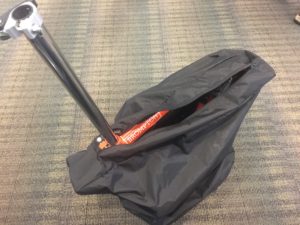 I prefer to keep the identity of my bike as secret as I can. It helps to avoid overly officious airline personnel from trying to tag you with a fee or require you to gate check. That’s why I love the Brompton bike cover. It easily slips over the bike and makes it look like an odd piece of rolling luggage rather than a super cool bicycle. I always have the cover on when I’m near the check-in desk and the gate.
I prefer to keep the identity of my bike as secret as I can. It helps to avoid overly officious airline personnel from trying to tag you with a fee or require you to gate check. That’s why I love the Brompton bike cover. It easily slips over the bike and makes it look like an odd piece of rolling luggage rather than a super cool bicycle. I always have the cover on when I’m near the check-in desk and the gate.
Update 12/15/15 — Never has it been more clear that stealth mode is important than now.
Ugh. Wanna know how and why?
#5 TSA/security + boarding tips
Ok, so you’re checked in for your flight, maybe checked your backpack or touring gear and you’re rolling to security. If you haven’t already, remove the saddle before you get too far in the line. Your Brompton is now small enough to go on the conveyer belt. It’s a bit of a dance to get your shoes off, and your other gear binned up but the bike’s pretty easy. Put it folding pedal side down and the shorter side facing the scanner. First time you do it, you’ll swear it won’t make it… but it does. Trust me.
Be prepared to have a security agent give you a knowing smile – the scanner gives away your secret pretty quickly.
Once you’re done with security, it’s best to get in position at the gate as soon as you can. Your best chance of getting your bike in the overhead bin is to be on the plane before as many people as possible. You know all those jerks who hover around the line waiting for their group to be called? Be that person this time.
Keep your cover on and roll your bike so you’re between it and the check-in attendant. This is the first of two human obstacles to the overhead bin, so stealth mode is pretty important here.
Once you get your boarding pass processed, keep rolling to your plane!
#6 Getting down the aisle and in the overhead
So you’re rolling down the jetway like a champ… now comes the tricky part. Collapse the seat post so you can lift the Brompton without inadvertently unfolding. Lift the bike by the top tube and make sure you give the flight attendant a big smile and a hello. On full flights most are trained to discourage larger roll aboards and encourage gate checking. I’ve run into a few that think my “bag” won’t fit. Being friendly and saying you’ve flown with it before and been able to stow it often works. This is where getting aboard early pays back big dividends.
Once past the flight attendant, it’s time to get to your seat and stow the bike above! I always keep an eye several rows ahead in case the overhead for my row is occupied. If it is and there’s a spot before, grab it. Worst case, keep looking past your seat for a spot in a bin toward the rear. It means waiting for everyone when you land, but better to be in the overhead than running out of space and sheepishly needing to gate check your bike after everyone’s boarded.
Congratulations! You’re flying with your Brompton AND you got it on as a carry on! Take that celebratory photo and impress your friends and family…


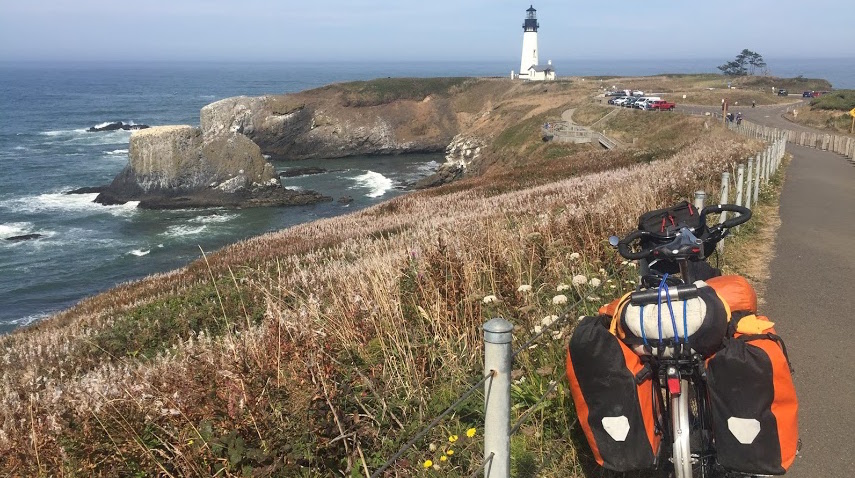
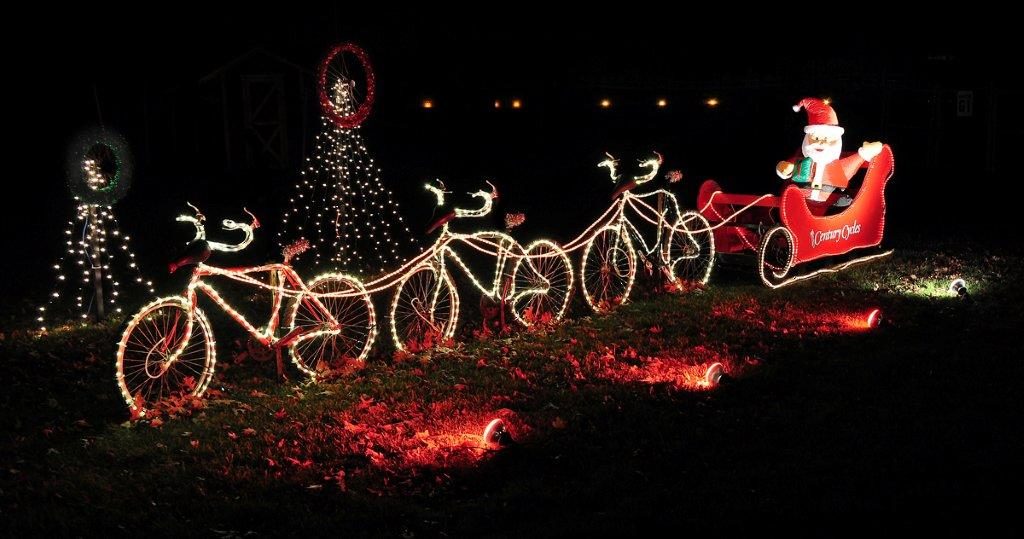
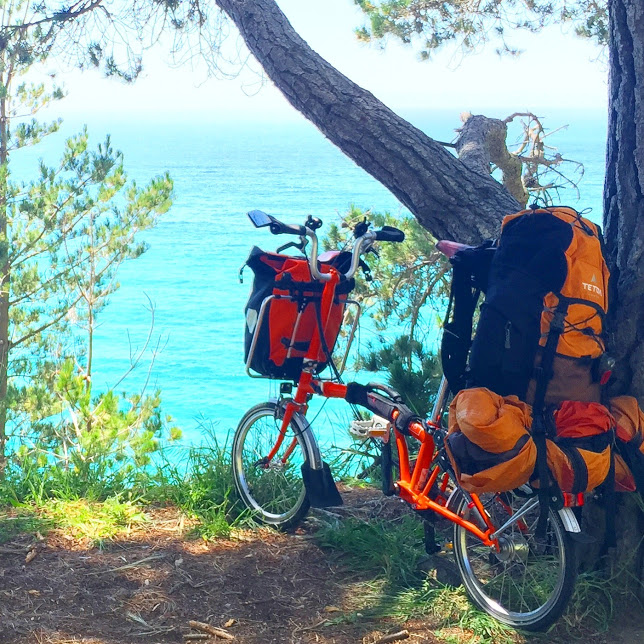
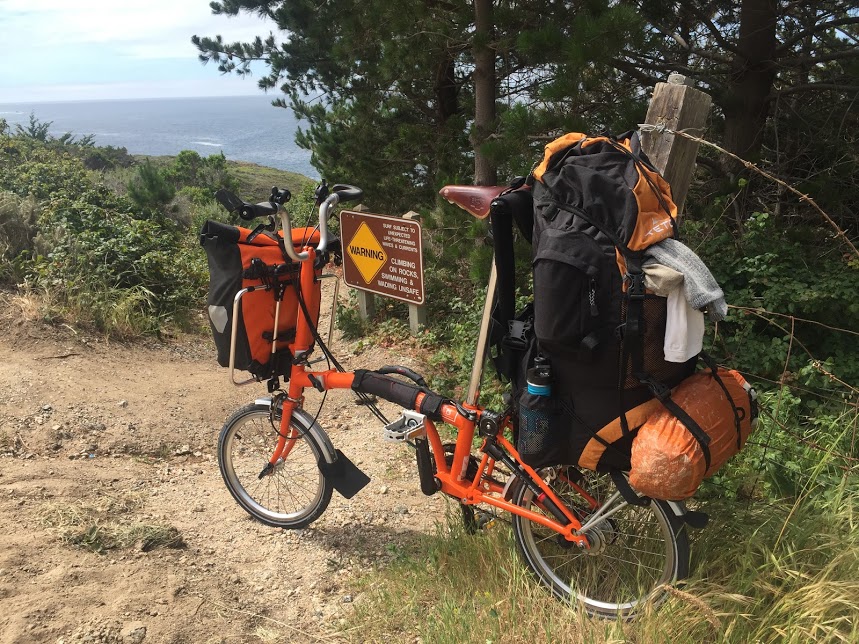
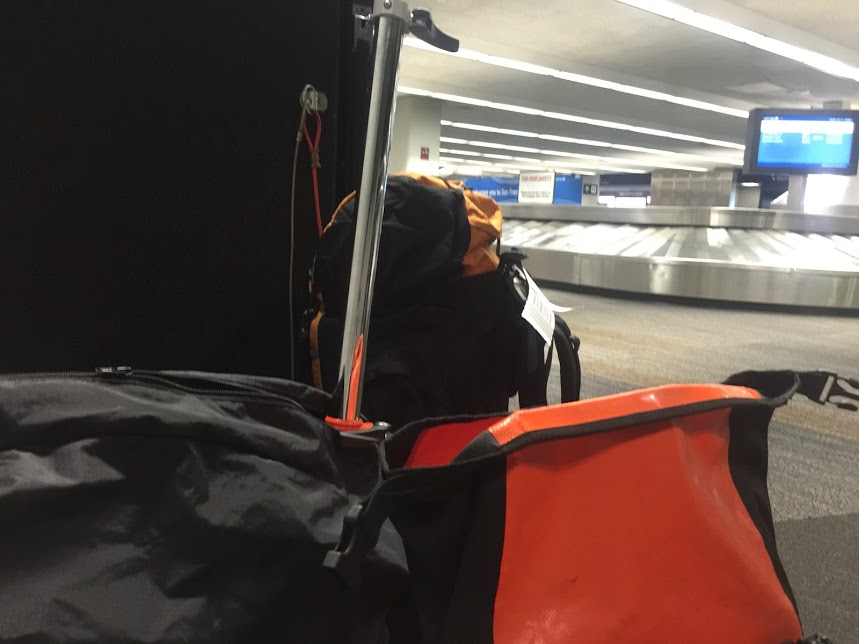
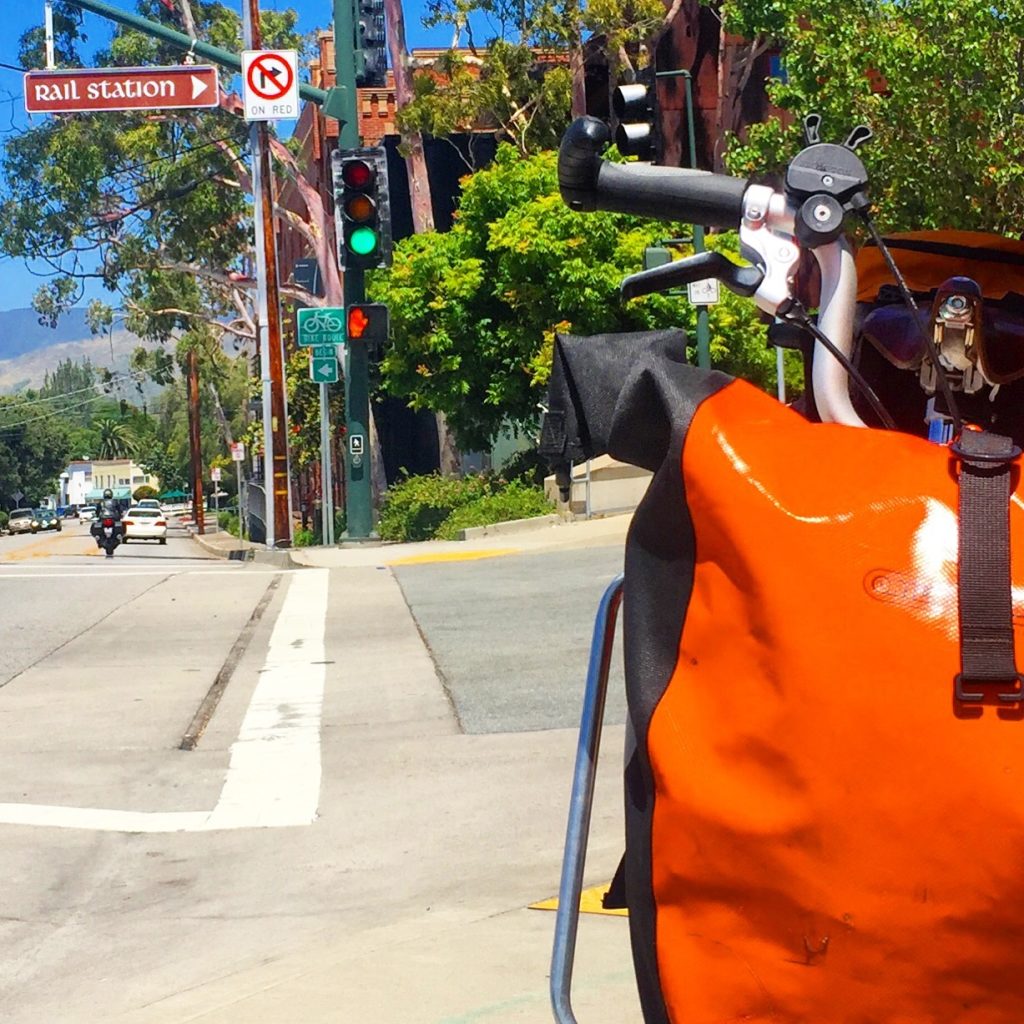
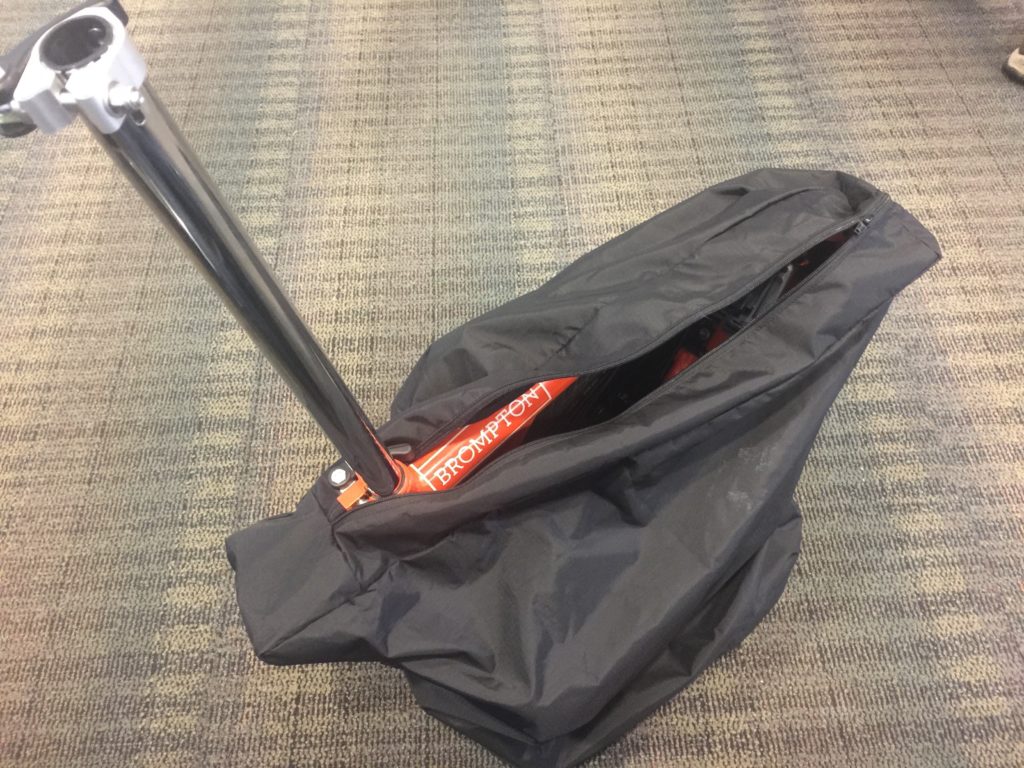
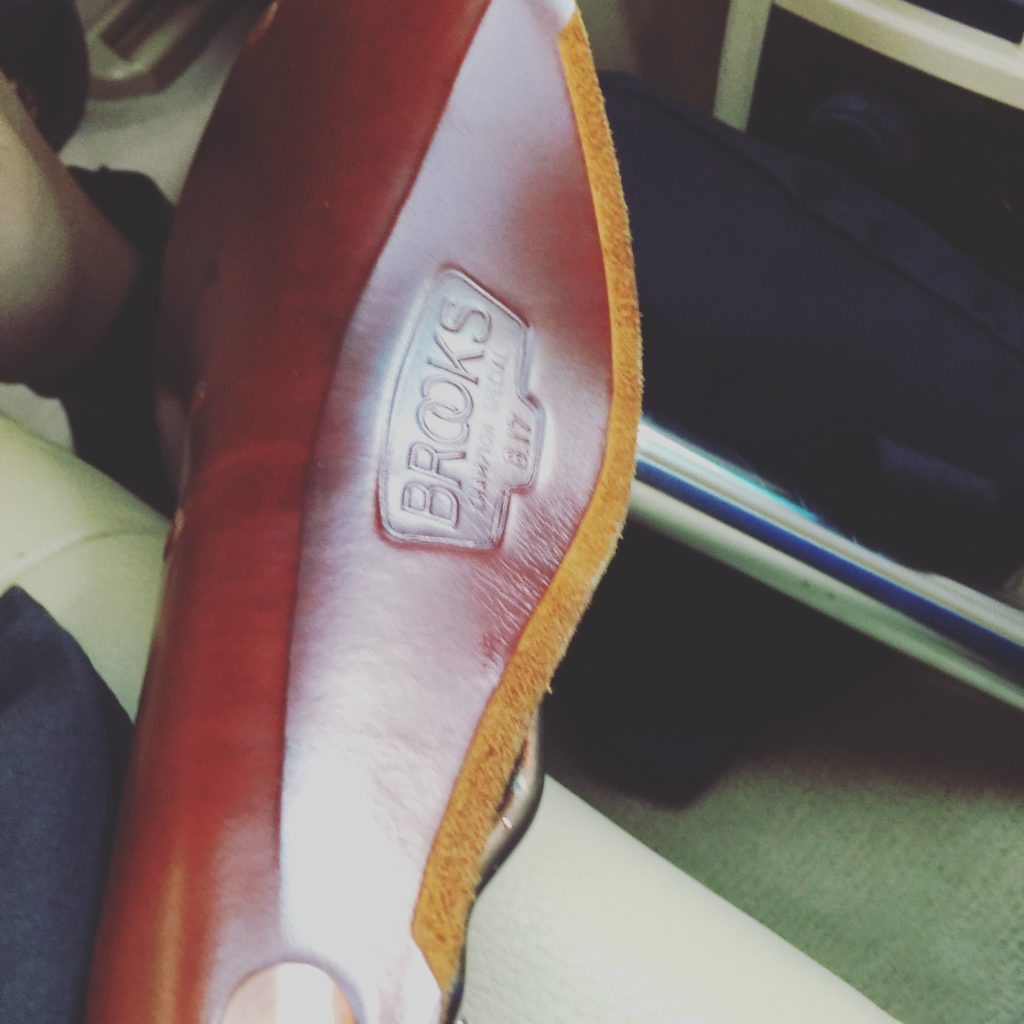
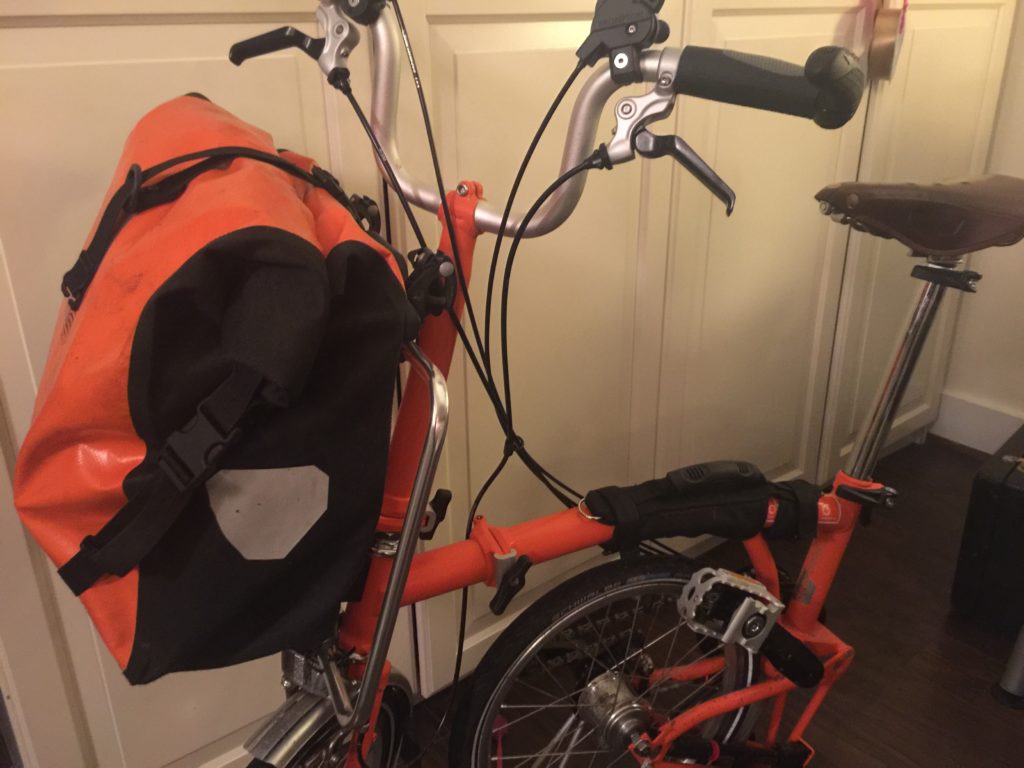
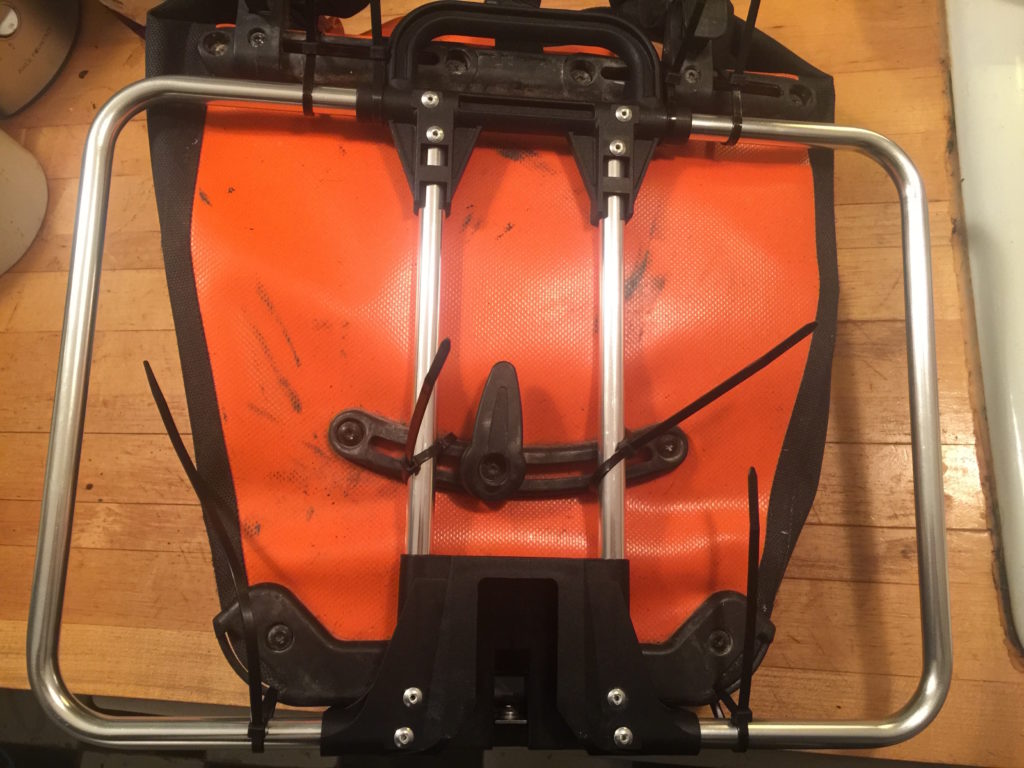
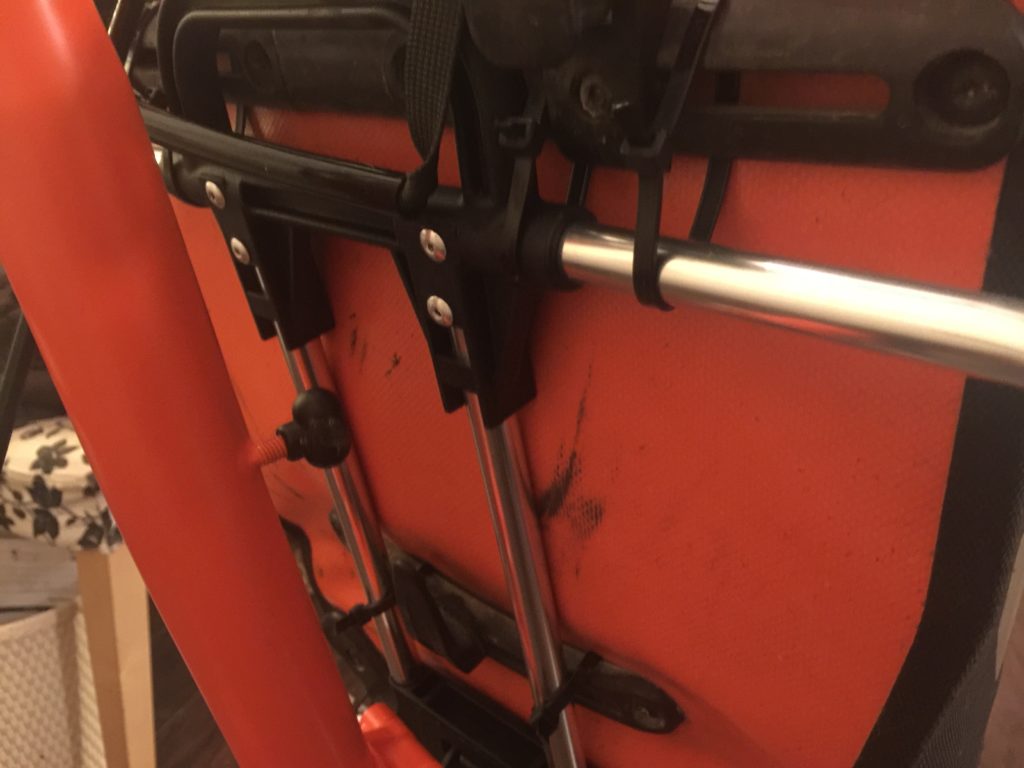
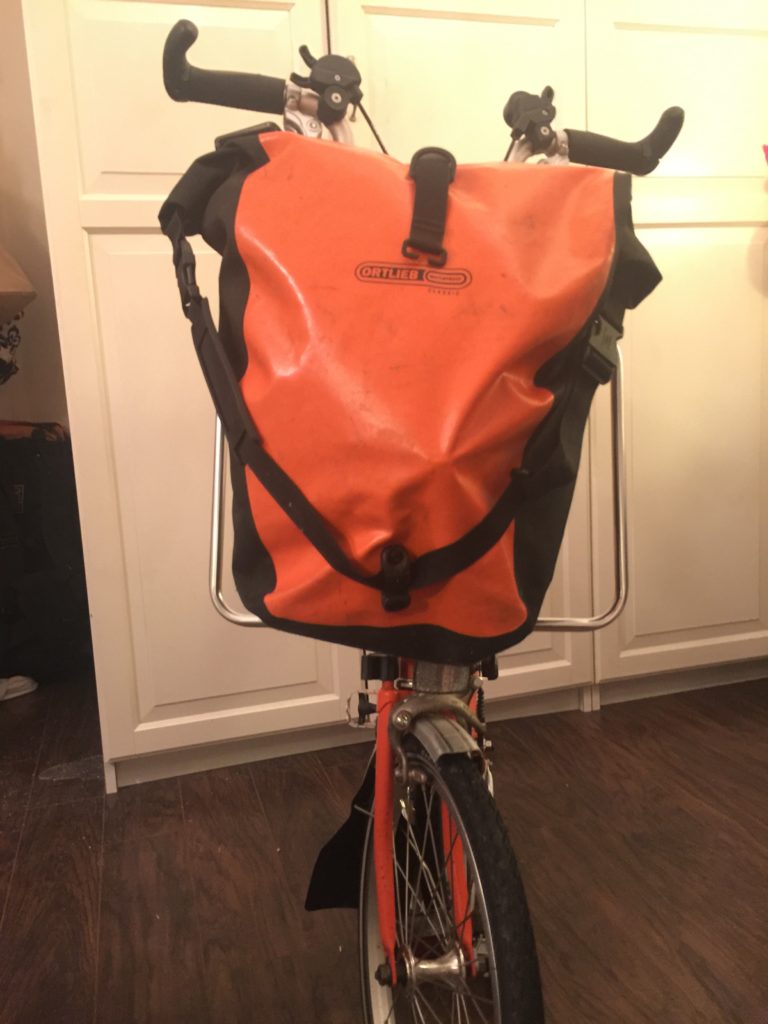
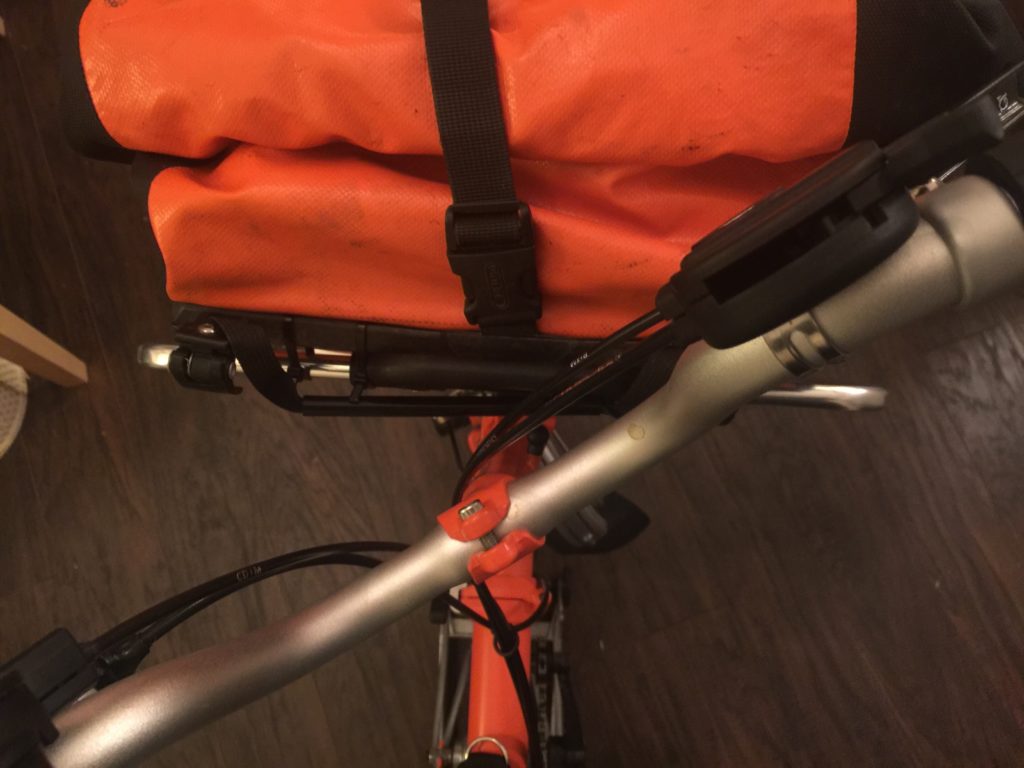
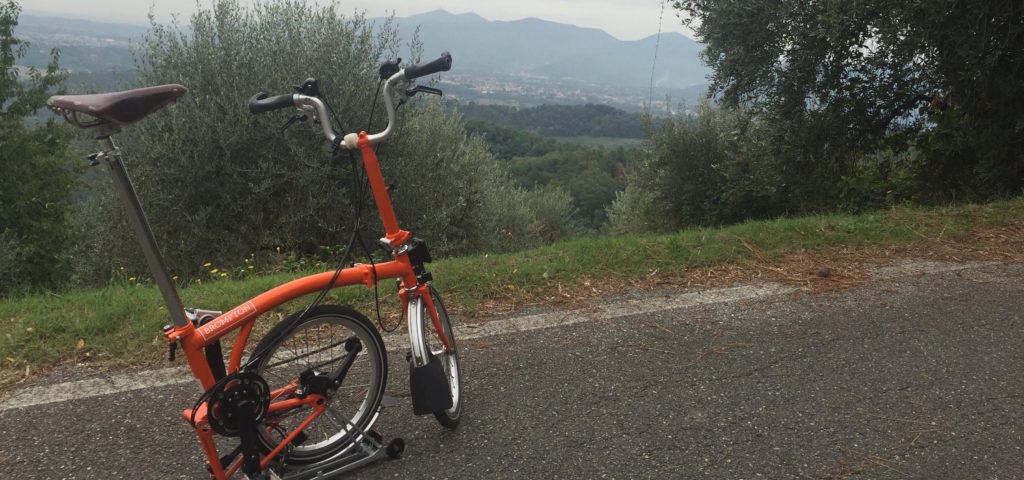
 The telescoping seat post is a real help when you’re planning on bringing your Brompton aboard with you. It lets you easily remove the saddle without tools, making your Brompton more compact to fit into two important places – the carry-on luggage belt and the overhead bins of most larger planes. It’s not that you can’t do this with the standard seatpost, but it requires you to unbolt your saddle… kind of a drag if you can avoid it.
The telescoping seat post is a real help when you’re planning on bringing your Brompton aboard with you. It lets you easily remove the saddle without tools, making your Brompton more compact to fit into two important places – the carry-on luggage belt and the overhead bins of most larger planes. It’s not that you can’t do this with the standard seatpost, but it requires you to unbolt your saddle… kind of a drag if you can avoid it. I learned this the hard way as a newbie in the airport so learn from my mistakes! The Brompton rolls like a champ if you have the easywheels and you extend the handlebars or saddle post. I prefer the saddle post for a little more stealth. Problem is when it’s extended and you need to lift the Brompton, it unfolds just when you least want it.
I learned this the hard way as a newbie in the airport so learn from my mistakes! The Brompton rolls like a champ if you have the easywheels and you extend the handlebars or saddle post. I prefer the saddle post for a little more stealth. Problem is when it’s extended and you need to lift the Brompton, it unfolds just when you least want it. I prefer to keep the identity of my bike as secret as I can. It helps to avoid overly officious airline personnel from trying to tag you with a fee or require you to gate check. That’s why I love the Brompton bike cover. It easily slips over the bike and makes it look like an odd piece of rolling luggage rather than a super cool bicycle. I always have the cover on when I’m near the check-in desk and the gate.
I prefer to keep the identity of my bike as secret as I can. It helps to avoid overly officious airline personnel from trying to tag you with a fee or require you to gate check. That’s why I love the Brompton bike cover. It easily slips over the bike and makes it look like an odd piece of rolling luggage rather than a super cool bicycle. I always have the cover on when I’m near the check-in desk and the gate.


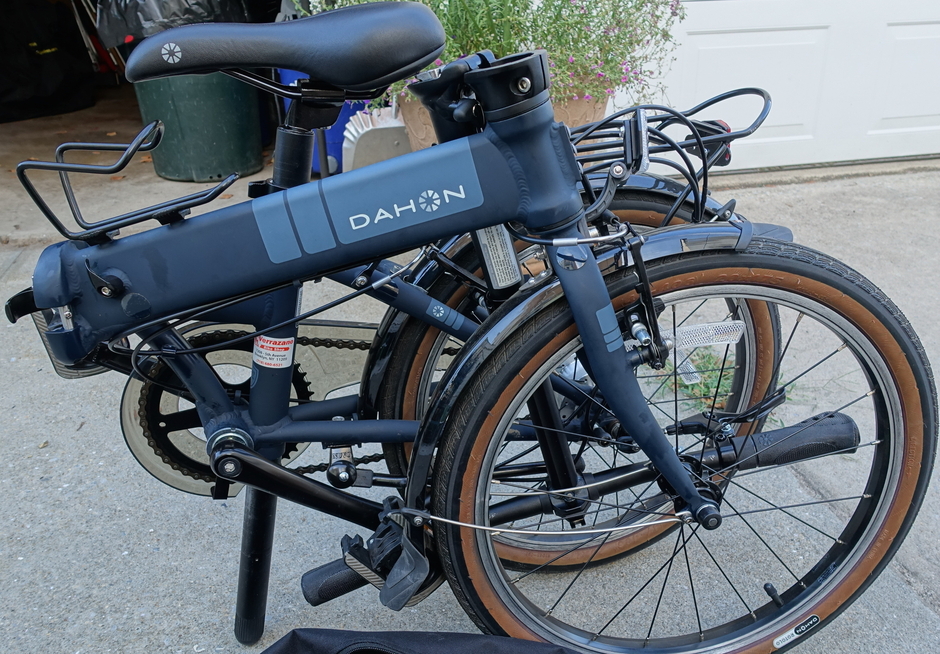

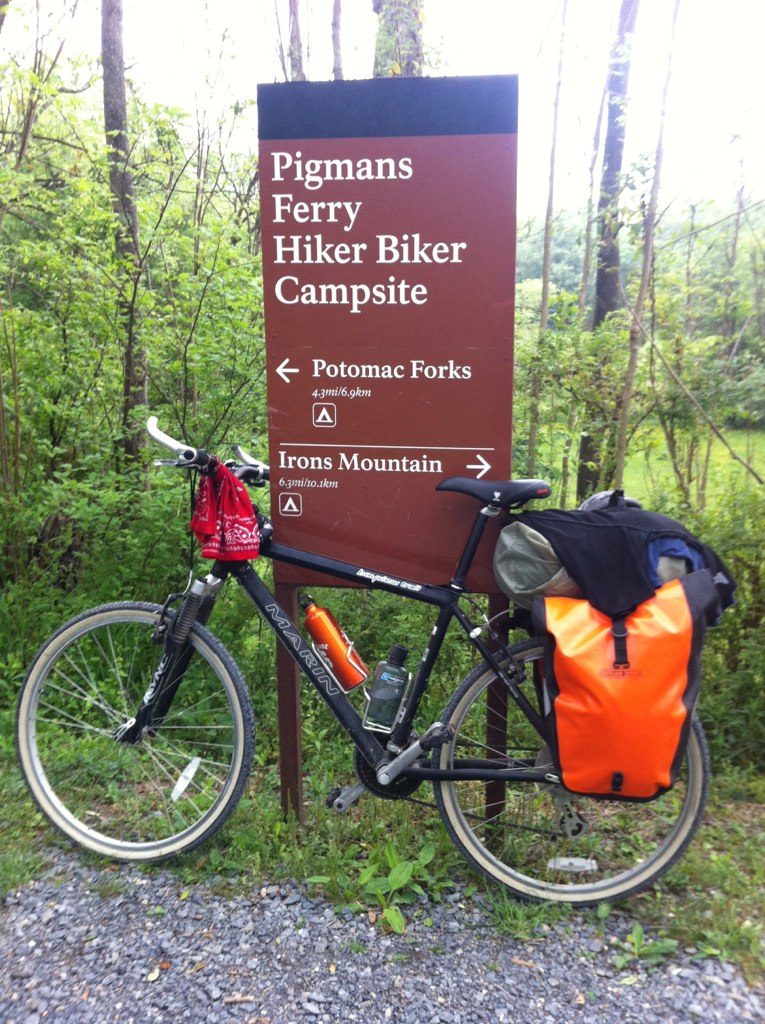
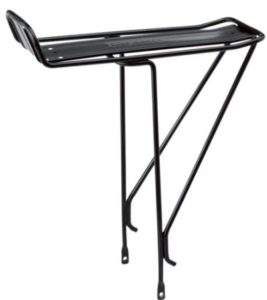 My old Marin mountain bike had the brazons that let me attach a simple, inexpensive rear rack. You don’t need anything fancy, but make sure the rack is attached well and has a reasonable weight rating. If you’re considering one of those clip-on rear racks (the kind that attach to your seat post alone) I’d recommend against that. They don’t hold enough weight unless you’re going ultralight. A decent $20 rack should do the trick, and hey… you might even have one in the garage lying about anyways!
My old Marin mountain bike had the brazons that let me attach a simple, inexpensive rear rack. You don’t need anything fancy, but make sure the rack is attached well and has a reasonable weight rating. If you’re considering one of those clip-on rear racks (the kind that attach to your seat post alone) I’d recommend against that. They don’t hold enough weight unless you’re going ultralight. A decent $20 rack should do the trick, and hey… you might even have one in the garage lying about anyways!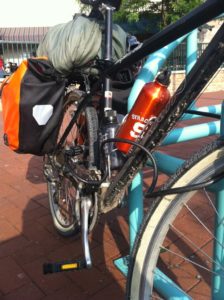 You don’t necessarily need fancy Ortlieb panniers (although they are nice). If you have a waterproof duffel, throw that on the rack and bungee it down. If you don’t have a waterproof bag, use whatever pack you have and throw it in a heavy duty garbage bag before you cinch it on the rack. Sure it won’t win any appearance awards, but we’re just going for function. Form can come later.
You don’t necessarily need fancy Ortlieb panniers (although they are nice). If you have a waterproof duffel, throw that on the rack and bungee it down. If you don’t have a waterproof bag, use whatever pack you have and throw it in a heavy duty garbage bag before you cinch it on the rack. Sure it won’t win any appearance awards, but we’re just going for function. Form can come later.